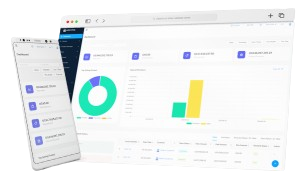Inventory holding cost is the expense your business incurs to store unsold inventory. While holding some inventory is necessary to meet customer demand, excessive storage can erode profits. Whether it’s paying for warehouse space, insurance, or managing stock losses due to theft or obsolescence, these costs add up quickly.
Effectively understanding and managing your inventory holding cost isn’t just a financial exercise—it’s a strategy to maximize profitability and streamline operations. By breaking down what contributes to these costs and learning how to calculate and reduce them, your business can save money, free up cash flow, and operate more efficiently.
What is Inventory Holding Cost?
Inventory holding cost refers to the total expenses your business incurs to store unsold inventory. These costs include storage fees, insurance, labor, transportation, depreciation, and theft, damage, or obsolescence losses.
It’s the price of keeping products on hand before they’re sold—a necessary expense for meeting demand but one that can strain your profits if not managed effectively. Controlling these costs is essential to improving profitability and ensuring your business runs smoothly.
Components of Inventory Holding Cost
Inventory holding costs are made up of several key expenses that your business pays to store and manage unsold inventory. These include:
- Storage Costs
These are the costs of renting or maintaining the space where your inventory is stored, such as warehouses or stockrooms. This category also includes utilities, security, and other overhead expenses related to the storage location. - Labor Costs
This includes the wages of employees who manage and handle the inventory, such as warehouse staff, as well as maintenance costs for the storage facility. - Depreciation Costs
Over time, some inventory loses value due to factors like wear, expiration, or market changes. Depreciation represents the gradual loss of value in your stock. - Opportunity Costs
Holding excess inventory can tie up funds that could have been used for other opportunities, like investing in faster-moving products or business growth initiatives. - Shrinkage Costs
Shrinkage accounts for inventory that is lost, damaged, stolen, or becomes obsolete. These losses directly impact your bottom line.
By understanding these components, your business can identify where to cut back and take steps to reduce overall holding costs.
Calculating Inventory Holding Cost
Understanding your inventory holding cost starts with a simple formula. This calculation can help you pinpoint the percentage of your inventory value being spent on holding costs, allowing you to make smarter business decisions.
Inventory Holding Cost Formula
Inventory Holding Cost = Storage Costs+Labor Costs+Depreciation Costs+Opportunity Costs/ Total Value of Annual Inventory
Example Calculation
Imagine an auto shop that maintains a warehouse for its inventory. After reviewing its books, the shop identifies the following annual costs:
- Storage costs: $35,000
- Labor costs: $200,000
- Opportunity costs: $30,000
- Depreciation costs: $25,000
- Total inventory value: $750,000
Using the formula:
Inventory Holding Cost = 35,000+200,000+30,000+25,000/ 750,000 = 0.3867 or 38.7%
This means the auto shop spends 38.7% of its inventory value on holding costs.
Key Steps to Calculate Your Costs
- Identify Tangible Costs
Gather data on storage expenses and labor costs from your accounting records. This includes rent, utilities, payroll, and other related costs. - Account for Intangible Costs
Work with your accountant to estimate depreciation (the loss of value over time) and opportunity costs (the profit you lose by holding stock instead of reinvesting in faster-moving products). - Determine Total Inventory Value
Calculate the average value of all inventory your business holds throughout the year.
Once you know your inventory holding cost, you can use this information to assess your current strategy and identify areas for savings.
Optimal Inventory Holding Cost Percentage
Every business has unique inventory needs, so the “ideal” inventory holding cost percentage can vary. However, most companies aim to keep their inventory holding costs between 20% and 30% of their total inventory value.
What works for one business may not work for another. For instance:
- A restaurant in a high-rent area might target a lower percentage by optimizing storage space and minimizing excess inventory.
- A manufacturing company with a longer production cycle might accept a higher percentage due to the nature of its operations.
The key is finding a balance that works for your business. If your holding cost percentage exceeds industry benchmarks, it’s worth evaluating your inventory strategy. Reducing costs, improving efficiency, and focusing on smarter inventory management can help you get closer to an optimal percentage.
Regularly reviewing your holding costs ensures they stay aligned with your business goals and help maintain profitability.
Strategies to Reduce Inventory Holding Costs
Reducing inventory holding costs doesn’t mean sacrificing quality or customer satisfaction. With the right strategies, your business can save money and operate more efficiently. Here are some practical ways to lower your inventory holding costs:
Practice Better Inventory Control
Efficient inventory control ensures you have the right stock at the right time. Start by:
- Forecasting demand accurately to prevent overstocking.
- Implementing perpetual inventory systems that track stock levels in real time.
- Reevaluating safety stock levels and vendor lead times to align with your current needs.
Using inventory management software with features like low-stock alerts and automated tracking can streamline this process and reduce human error.
Optimize Your Storage Space
Storage expenses can add up quickly, especially for off-site facilities. To cut costs:
- Reorganize your storage layout to maximize space efficiency.
- Invest in vertical storage systems to store more inventory without increasing your footprint.
- Regularly audit your storage areas to ensure you’re only holding what you need.
Negotiate with Suppliers
Building strong relationships with suppliers can reduce costs in several ways:
- Negotiate better rates for bulk orders or extended payment terms.
- Collaborate with suppliers to reduce lead times, minimizing the need to overstock.
Reduce Obsolete Inventory
Deadstock takes up valuable space and drains resources. Minimize it by:
- Monitoring inventory turnover rates.
- Discounting slow-moving items to clear space for more profitable products.
- Avoiding over-ordering by relying on accurate demand forecasting.
Implementing these strategies can significantly lower your inventory holding costs, helping your business save money and improve profitability.
Benefits of Managing Inventory Holding Costs
Effectively managing inventory holding costs isn’t just about cutting expenses—it’s about strengthening your business as a whole. Here are the key benefits:
Improved Profit Margins
Lower holding costs mean more of your revenue goes directly to your bottom line. By reducing unnecessary expenses, you can boost profitability without increasing sales.
Better Cash Flow
Reducing inventory-related expenses frees up cash that can be reinvested in other areas, like purchasing faster-moving stock, expanding your business, or improving operations.
Enhanced Operational Efficiency
With optimized inventory levels, your team spends less time managing excess stock and more time focusing on core business activities.
Minimized Risk of Loss
By reducing overstock and improving turnover rates, you’ll face fewer losses from theft, damage, and obsolescence, protecting your assets and your bottom line.
Stronger Supply Chain Management
Proactive management of inventory holding costs ensures you’re better prepared to adapt to supply chain disruptions and fluctuating demand.
Managing these costs isn’t just a cost-saving measure—it’s a strategy to create a leaner, more agile, and more profitable business.
Tools to Support Inventory Management
Inventory Management Software
Modern inventory management software offers powerful features that simplify day-to-day operations:
- Real-time tracking: Keep tabs on stock levels with automatic updates.
- Low-stock alerts: Get notified when it’s time to reorder.
- Customizable reports: Analyze trends to improve decision-making.
- Barcode and QR code scanning: Speed up data entry and minimize errors.
Demand Forecasting Tools
Forecasting tools use historical data and market trends to predict future demand. This helps your business order the right amount of inventory, reducing the risk of overstocking or stockouts.
Warehouse Management Systems (WMS)
A WMS helps optimize your storage space by improving how inventory is organized and tracked within your facility. Features include:
- Space utilization tools to maximize storage efficiency.
- Automated picking and packing systems to speed up order fulfillment.
Perpetual Inventory Systems
Perpetual systems track inventory changes as they happen, offering a clear view of stock levels at any moment. This ensures your data is always up-to-date and helps you respond quickly to inventory needs.
By investing in these tools, your business can improve inventory accuracy, save money on holding costs, and stay better prepared for changes in demand.
Conclusion
Managing inventory holding costs is important for maintaining a profitable and efficient business. By understanding the components of these costs, calculating them accurately, and implementing strategies to reduce them, you can free up cash flow, boost profitability, and streamline operations.
With tools like inventory management software, demand forecasting systems, and warehouse management solutions, you can take control of your inventory and make smarter decisions that benefit your bottom line.
Don’t let excessive holding costs drain your resources. Start optimizing your inventory strategy today and watch your business thrive.






